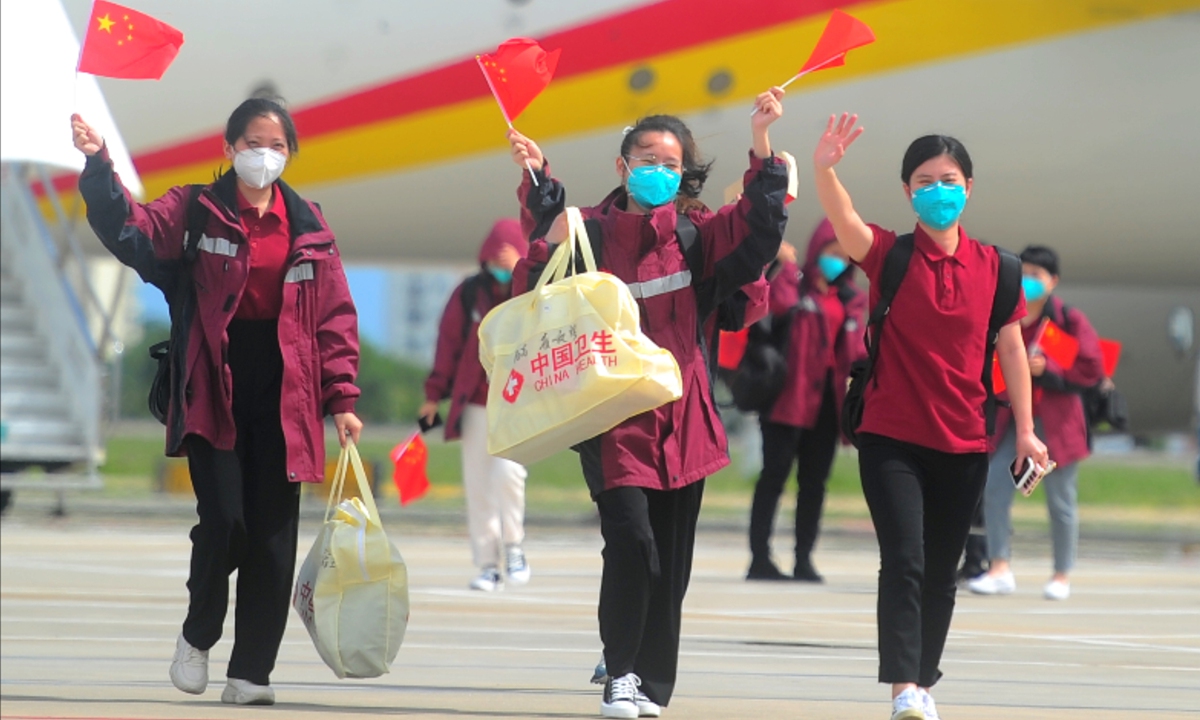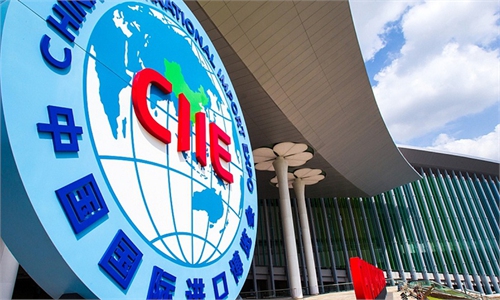China to set up 20 more national medical expert teams to enhance response to public health emergencies

Medical staffers wave Chinese flags upon arriving at an airport in Sanya, South China's Hainan Province on May 23, 2022. Chartered planes carrying 906 members of a medical team who had finished aiding Shanghai's anti-epidemic work arrived at the airport on the day. Photo: VCG
China will set up 20 more national medical treatment expert teams to strengthen the country's response capabilities in dealing with public health emergencies, drawing on lessons from the fight against COVID-19 in the past three years, the National Health Commission (NHC) said on Monday.
"Over the past three years or so, China coordinated epidemic prevention and control with economic and social development in an efficient manner, creating a miracle that the country with one of the largest populations in the history of human civilization has successfully emerged from the epidemic," said Mi Feng, a spokesperson of the NHC.
"The COVID-19 epidemic has taught us the importance of medical emergency management. Not only public health emergencies, China is also a country of frequent natural disasters," Guo Yanhong, director of the medical emergency response department of the NHC, announced at a Monday's press briefing.
China has 40 state-level emergency medical rescue teams, including comprehensive rescue, poisoning and nuclear radiation treatment. On top of that, the country plans to add 20 more medical treatment teams to boost emergency aid capability, Guo noted.
China will establish a multi-level emergency coordination system to ensure relevant decisions are taken at a faster speed and in an orderly manner and are implemented effectively, Guo noted.
National bases for emergency medical rescue and the treatment of major infectious diseases, as well as medical emergency training bases for natural disasters, public health, social security, accidents and disasters will also be set up, according to Guo.
Monday's press briefing also highlighted the efforts and experience of how the customs authorities and the Ministry of Industry and Information Technology (MIIT) coped with the epidemic in the past three years.
The MIIT established a coordination mechanism that ensured medical resources were delivered and allocated to the most necessary places.
Over the past three years, customs took the most comprehensive, rigorous and thorough measures in the history of epidemic prevention and control at ports. A total of 160 million inbound people were quarantined, 82,000 COVID-19 positive cases were detected, and more than 6 million samples of imported cold chain food were monitored and tested, said Li Zhengliang, an official from the State General Administration of Customs.
With the gradual resumption of international flights, the opening of border ports, and the resumption of personnel exchanges between the Chinese mainland and Hong Kong and Macao special administrative regions, the risk of imported coronavirus strains and other infectious diseases is increasing, and the prevention of imported diseases still faces great challenges, Li said.
Since China downgraded its COVID-19 management on January 8, customs authorities have inspected 30 imported mutated variants of COVID-19. Variants such as XBB.1.9, XBB.1.9.1 and XBL were first detected in the Chinese mainland, Li noted.
Global Times



